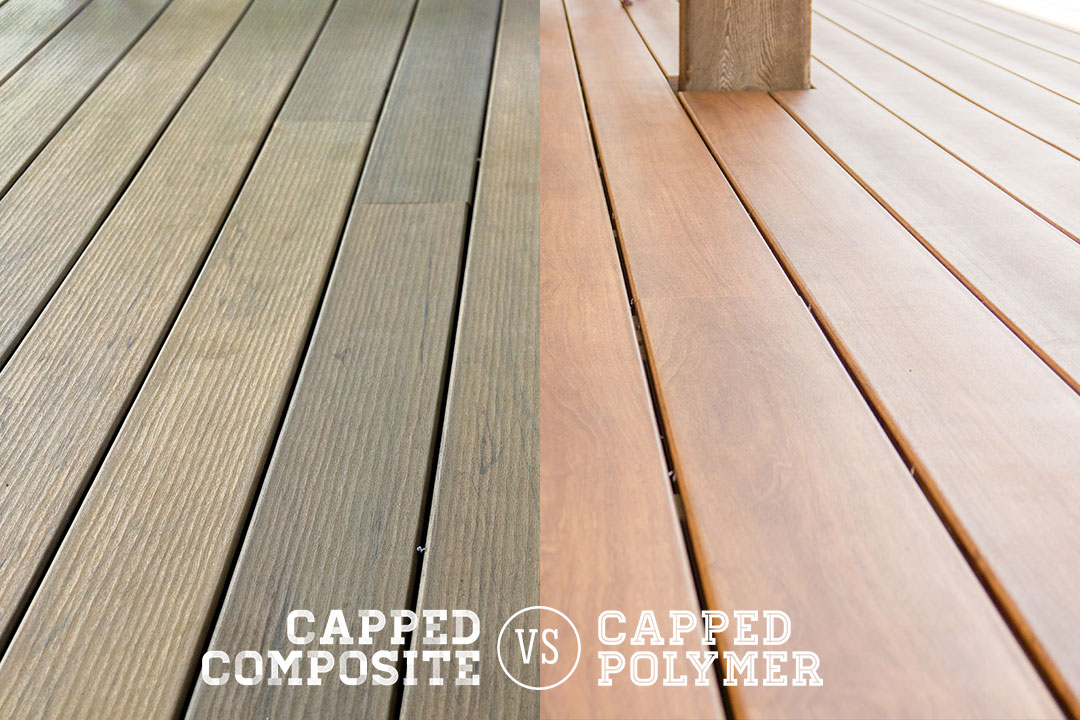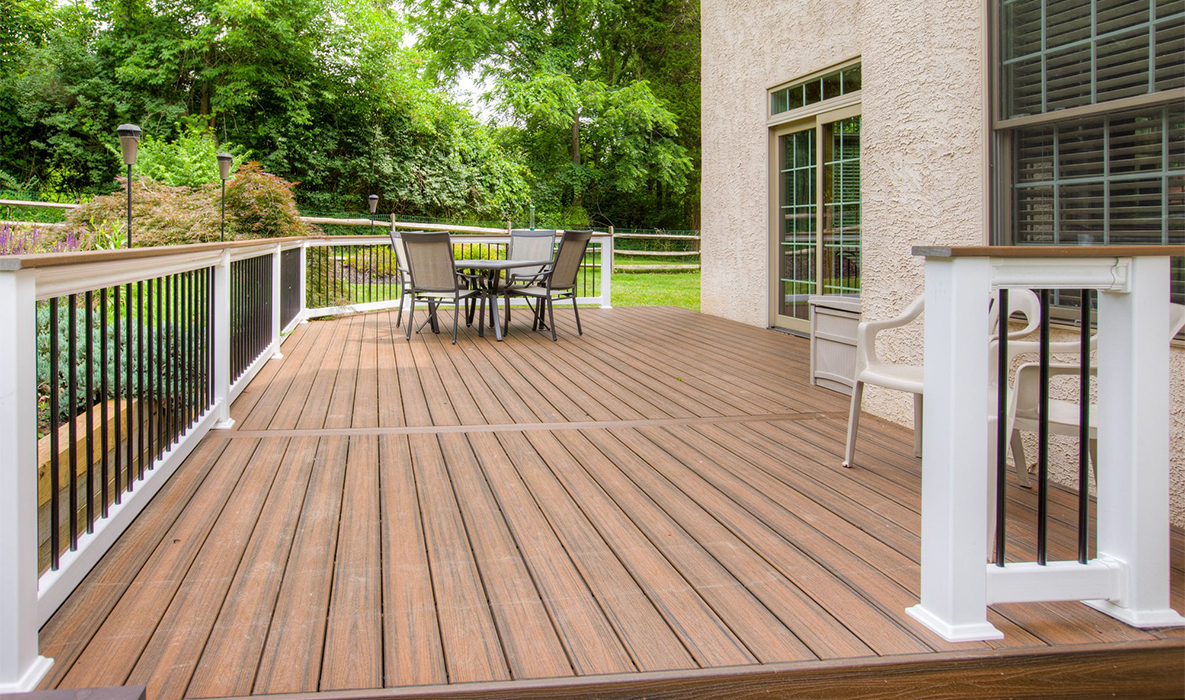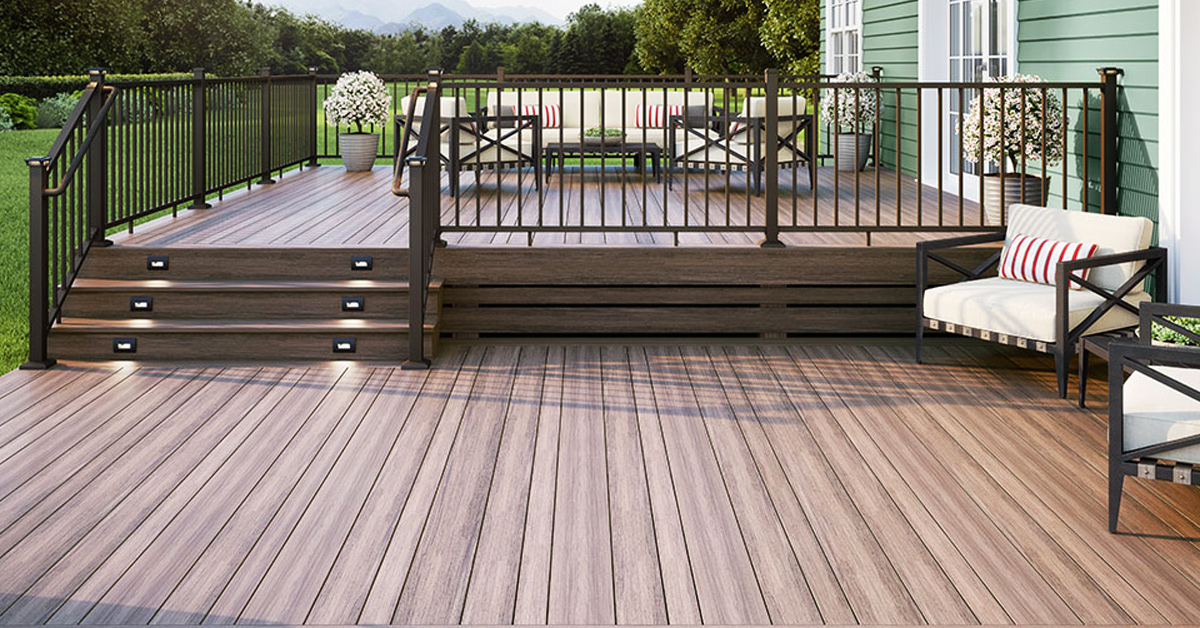Capped composite decking, such as Trex and Timbertech, doesn’t need to be stained every year to preserve its color as wood does. It won’t splinter or get weak from exposure to the weather like wood does. The nails and screws won’t loosen over time like wood will. Capped composite decking isn’t affected by seasonal changes in temperature and moisture the way wood is, making it the ideal deck material if you live in an area that gets a wide variety of weather conditions throughout the year or if you just want your deck to last longer than usual.
Why You Should Consider Capped Composite Decking
It’s a common misconception that capped composite decking isn’t maintenance-free. What’s true is that you won’t be able to replace boards or get a do-over as you can with wood. Capped composites are structurally superior to wood, and they don’t shrink or swell in response to changing weather conditions, so there aren’t really any differences between maintaining a komposittrall längder as opposed to maintaining a wood deck.

How Does Capped Composite Decking Work?
The process of capped composite decking begins with finishing your wood deck first. Capped composite decking includes a plastic layer that covers up wood fibers to protect it from splintering and fading colors, both caused by natural sun exposure. When combined, these two materials work together to create a durable product that will make your backyard look great for years to come.
Is it Cheaper to Install?
Answering whether capped composite decking will be cheaper than wood deck boards can come down to a few factors. First of all, it depends on how much maintenance you anticipate needing to do. If you are not a fan of sanding, staining, and sealing the wood, then plastic may be more cost-effective. Secondly, think about your time value—how much money would you save if you didn’t have to spend time making repairs or working with contractors?

Will my Capped Composite Deck Look Like Wood?
Plastic decking companies can offer maintenance-free decks with unique designs and colors. Well, that’s how long these plastic decks last too. They are also more durable than traditional woods like pine or cedar. If you’re looking for an alternative way to build your own deck then consider using plastic boards as your building material instead of wood. You don’t have to be an expert carpenter either because they’re really easy to make from scratch (literally). The key is using some type of adhesive that’s easy enough for anyone to use without any prior experience whatsoever.
What Colors are Available?
When it comes to maintenance-free plastic decking, you have a number of color options. To start, there are almost limitless different color combinations that you can choose from, with each deck type being available in two or three unique colors (you can find more information on my maintenance-free deck’s page). You can also install patterned deck boards, further personalizing your outdoor space and making it uniquely yours.

Do I Have a Choice of Lengths?
Your capped komposittrall will come in a series of standard lengths including 5, 7.5, 10, 12.5, 15, 20, and 25 feet. If you plan on using your deck for sunbathing or lounging around with friends during those nice summer days it’s best to have at least 10 feet worth of deck length as most people require that amount of space to get comfy out in nature.


